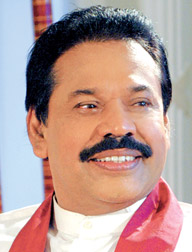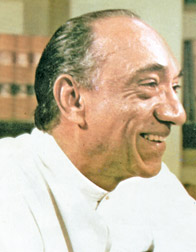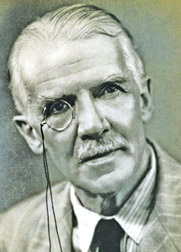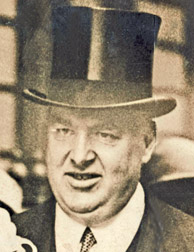Constitutional reforms over the years
By Jaliya WIJEYEKOON
 Constitutional reforms are a much talked-about subject in political
circles these days. This is due to the Government being able to muster
the support of over two third of the members in the house with the
agreement formed with the Sri Lanka Muslim Congress (SLMC) members who
officially announced their willingness to support the proposed reforms
while being members of the opposition. Before venturing into
scrutinising, assessing and analysing the proposed 18th Amendment, it is
appropriate to look into the Constitutional reforms of our country since
the inception of the Constitution. Constitutional reforms are a much talked-about subject in political
circles these days. This is due to the Government being able to muster
the support of over two third of the members in the house with the
agreement formed with the Sri Lanka Muslim Congress (SLMC) members who
officially announced their willingness to support the proposed reforms
while being members of the opposition. Before venturing into
scrutinising, assessing and analysing the proposed 18th Amendment, it is
appropriate to look into the Constitutional reforms of our country since
the inception of the Constitution.
Sri Lanka, which has a recorded history of over 2,500 years as an
independent nation, became a colony of the British Empire in 1815 and
the British rulers started governing this country based on the policies
adapted by them for their colonies.
A few years into the British rule, the then Governor of Ceylon Sir
Robert Brownrig? wanted to streamline the internal administration, and
introduced the Colbrooke and Cameron reforms in 1828 by which many
significant changes were put in place in the administrative structure of
the government. At the beginning, all powers were vested with the
Governor who was the sole authority representing the King of England.
With the introduction of the Colbrooke-Cameron recommendations, the
executive, judicial and legislative powers were divided and the Supreme
Court was set up under a charter of Justice for the smooth functioning
of justice and fairplay.
The British governed our country for almost a century under the
Colbrooke-Cameron reforms with minor adjustments on certain issues.
There were drastic changes in the social, cultural, educational,
economic and religious spheres with the prolonged British administration
in the country.
Post-Independence
However, with the passage of time, Sinhalese politicians became
unhappy over the functions of the Executive Council on which colonial
officials enjoyed predominance.
The Sinhalese politicians were also not happy with the composition of
the legislative Council, the island's principal law-making body which
had considerable authority over the public purse. The Sinhalese leaders
disliked it because it excluded them from executive authority and
because of an over-representation of non-Sinhalese in the Council.
Donoughmore Reforms
 The unhappiness which the Constitution engendered led to the
announcement in April 1927 that a special committee would be appointed
to draft new constitutional reforms. One of the main concerns of the
Commission, which was handled by Lord Donoughmore, was the possible
extension of franchise to men and women of over 21 years of age, over
which some of the Ceylon National Congressmen had reservations. The unhappiness which the Constitution engendered led to the
announcement in April 1927 that a special committee would be appointed
to draft new constitutional reforms. One of the main concerns of the
Commission, which was handled by Lord Donoughmore, was the possible
extension of franchise to men and women of over 21 years of age, over
which some of the Ceylon National Congressmen had reservations.
The only people who advocated universal franchise were Labour leader
A.E. Goonesinghe and two British residents of Ceylon. They also proposed
the merger of Executive and legislative roles within a single State
Council of six members, to last for a term of five years. Sixty members
were to be elected from the electorates.
This was major gain for the previously under-represented Sinhalese
while eight were nominated by the Governor to give adequate
representation to the minorities. Further, three members were to be the
officers of State in charge of executive portfolios which were excluded
from non-official control; Finance, Justice, Public Services, Defence
and External Affairs.
Some of the provisions enshrined in the Donoughmore report were
borrowed from the London Country Council.
The Governor's powers were increased to balance those of State
Council. His right to enact legislation for the Royal assent was
extended to cover several new types of bills. He was also empowered to
suspend decisions of Executive Committees in these same areas, and also
retained control of matters concerning Civil Servants.
 Although the British rulers governed the country enacting the
Donoughmore recommendations for sometime, the progressive forces of the
day were not fully satisfied with the system and repeatedly stated the
importance of obtaining more powers in administrative affairs of the
country. Although the British rulers governed the country enacting the
Donoughmore recommendations for sometime, the progressive forces of the
day were not fully satisfied with the system and repeatedly stated the
importance of obtaining more powers in administrative affairs of the
country.
There were prominent local politicians in the State Council such as
D.S. Senanayake, J.R. Jayewardene, S.W.R.D. Bandaranaike, Dr. N.M.
Perera and Sir D.B. Jayathilake who were active members of the Ceylon
National Congress, the organization which had been formed by patriotic
leaders of the day which immediately advanced to be a formidable force
to be reckoned with since most of its members were farsighted
politicians.
It was the era when the Freedom Struggle for self-government was
gaining ground in India and it had a direct impact on our country as
well since the Ceylon National Congress had a close rapport with Indian
freedom fighters. The local political leaders of the day, irrespective
of any differences, called upon the British rulers to grant the country
self autonomy since the people are quite confident of looking after
their affairs.
Eventually, it came to a stage where the British Monarch had to head
the people's request; he appointed Lord Soulbury to make recommendations
with regard to the internal administration of Ceylon.
Birth of Soulbury Constitution
However, the British Government refused to undertake the drafting of
a constitution amidst World War II and D.S. Senanayake, the then
Chairman of the Board of Ministers appointed B.P. Peiris, Assistant
Legal Draftman to draft a new constitution.
 The 1946 Constitution, which B.P. Peiris drafted and named the
Soulbury Constitution was the best that Sri Lanka yet had, according to
some political analysts. It was the model that the British Government
had used when it began dismantling the far-flung colonial empire. It had
no ideological basis and professed no economic or social objectives. It
was only concerned with establishing the essential framework for
democratic governance. The 1946 Constitution, which B.P. Peiris drafted and named the
Soulbury Constitution was the best that Sri Lanka yet had, according to
some political analysts. It was the model that the British Government
had used when it began dismantling the far-flung colonial empire. It had
no ideological basis and professed no economic or social objectives. It
was only concerned with establishing the essential framework for
democratic governance.
It did so by creating a few principal institutions and defining their
powers; a Constitutional Head of State, a Parliament comprising two
Chambers, a Cabinet of Ministers headed by the Prime Minister charge
with the general direction and control of the government and
collectively responsible to the Parliament, Permanent Secretaries
charged with exercising supervision over departments of government
subjects to the general direction and control of the relevant Ministers,
security for judges of the Supreme Court, Judicial Service Commission
and Public Service Commission, the Consolidated Fund, Contingencies Fund
and an Auditor General.
Under the 1946 Constitution, it was possible for both right wing and
left or centre political parties to be elected to office and implement
their programs unhindered. It was possible to practise free market and
regulated economic policies. The parliamentary executive system of
government it provided was strong enough to withstand the youth
insurrection in 1971. It was also possible for a government that had
lost its popularity to be removed either by a parliamentary vote of no
confidence or through defeat at a general election.
The separation of power was an inherent feature of the Constitution
and Judges exercised the power of judicial review of legislative and
executive action. Under this constitution, people in the country enjoyed
a quarter century of relative tranquility, stable government and respect
for individual rights and freedom.
First Republican Constitution
 The country was governed by six national leaders under the Soulbury
Constitution from its introduction and in 1972 the SLFP Government of
Sirimavo Bandaranaike introduced the non-executive Presidential form of
government. The official name of the country was changed to Democratic
Socialist Republic of Sri Lanka while the parliament too was renamed as
the National State Assembly and parliamentarians became members of the
National State Assembly with the bicameral legislature becoming
unicameral. The country was governed by six national leaders under the Soulbury
Constitution from its introduction and in 1972 the SLFP Government of
Sirimavo Bandaranaike introduced the non-executive Presidential form of
government. The official name of the country was changed to Democratic
Socialist Republic of Sri Lanka while the parliament too was renamed as
the National State Assembly and parliamentarians became members of the
National State Assembly with the bicameral legislature becoming
unicameral.
Another major change relating to the judiciary was that the right to
appeal to the Privy Council was done away with. On the other side of
same paper The Governor General, who functioned under the Soulbury
Constitution as the constitutional figurehand representing the Queen of
England was replaced with a ceremonial President appointed by the Prime
Minister.
The first Republican Constitution of 1972 included almost all
significant features of the Soulbury Constitution while some additions
were enshrined in respect of fundamental rights of the citizens.
J.R. Jayewardene became the leader of the Opposition and the leader
of the United National Party with the demise of Dudley Senanayake in
1973. He aggressively reorganised the party and sought a mandate from
the people to form a government and introduce a new Constitution.
He obtained a mammoth five-sixth majority at the election and lost no
time in introducing his brainchild, alleging that the 1972 Constitution
did not have adequate checks and balances and had similar drawbacks.
The first Executive Presidential Constitution which J.R. Jayewardene
introduced in 1978 is still in force despite various objections from
whatever party is in opposition. President Jayewardene had to make a
number of amendments to the Constitution so that it suits the situation
of the country and the political environment of the time, to avoid and
sometimes to suppress certain vital political issues.
However, of all the subsequent amendments to the Constitution, the
most controversial was the 13th Amendment provided for the devolution of
power to the periphery, via a network of Provincial Councils. The United
National Party, headed by the three leaders JR, R. Premadasa and D.B.
Wijethunga ruled the country under the umbrella of the 1978 Constitution
till 1994.
Meanwhile, the Opposition led by the SLFP crusaded against the
dictatorial nature of the Constitution, referred to at times as JR's
Bahubootha Viyawasthawa or evil and obnoxious Constitution by Chandrika
Kumaratunga. They conducted islandwide campaign to abolish the
Constitution and introduce a more people-friendly democratic one to the
country if they are voted in to power.
However, Kumaratunga too governed the country for two consecutive
terms, but no effective action was initiated to abolish or make any
changes in the Constitution.
President Mahinda Rajapaksa who took over the reigns of Government in
2005 said that he would abolish the draconian constitution for which the
groundwork is now laid.
President Rajapaksa is about to complete his first term of office.
There is no sign of completely abolishing or introducing a new
Constitution since he has fully utilised the resources available in the
present Constitution in defeating the three-decade conflict which had
been a cancer to the nation. Whether political analysts agree or not, it
is quite evident that the Executive Presidency was of immense use in
defeating terrorism, stabilising the economy, resisting political
turmoil and maintaining discipline in the party in power.
Now the ruling party, headed by President Rajapaksa, has decided not
to abolish the Constitution, but to introduce the 18th amendment to the
Constitution which will extend the President's term to more than two.
Constitutional experts and political analysts express different views
on the proposed 18th Amendment while the main Opposition UNP and the JVP
have decided to protest the amendment. the five-member leftwing camp has
still not decided their course of action according to M.P. Vasudeva
Nanayakkara.
However, the government is quite confident of mustering the required
number of votes to pass the 18th Amendment with the support of the SLMC
members.
Hence, the country is anxiously waiting for the final outcome of the
reforms that would be introduced by the Government. |

